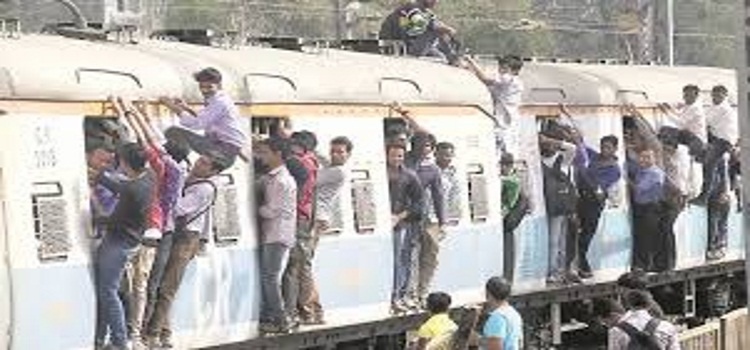
It’s often described as Mumbai’s “lifeline” but overcrowding in the trains is one of the main factors behind around 300 commuters dying every month in railway accidents, according to statistics provided to the Bombay High Court. The High Court has been hearing petitions on overcrowding and lack of infrastructure at railway stations since 2008. In these years, it has passed several orders to the railways but their implementation has mostly remained on paper despite several accidents taking place.
Retired Justice V M Kanade, who heard the matter pertaining to setting up emergency medical rooms in stations over the years, in fact held a meeting with officials from the Central Railway (CR) and the Western Railway (WR) along with the police department (railways) in December 2016 to address overcrowding and issues related to infrastructure. He had sought a vision statement to be prepared by the railways for the future to keep up with infrastructure development. Speaking on how such court orders fall on deaf years, the former judge said, “In the last two years, I passed several orders, which included directions to provide escalators and foot overbridges at stations. A meeting was also held in the judges conference room for this purpose.”
Referring to the stampede at the Elphinstone Road station’s foot overbridge last Friday, he said, “During Ganesh Chaturthi celebrations, especially at Lalbaug, there is a huge rush but a stampede-like situation is avoided by proper management, which is missing when it comes to the railways.” According to him, such incidents are a reflection of the casual approach of the bureaucracy when it comes to providing public utilities. “It is almost like they are waiting for an accident to happen,” said Kanade. Emphasising that Mumbai was the financial capital, he said, “Everyday people bank on this mode of transport. What is being done for them?”
This particular petition relating to overcrowding and setting up emergency medical rooms hasn’t come up for hearing since March this year. “Once a public interest litigation is not heard for a period, officials tend to have a relaxed attitude about it,” the former judge said. In the meeting in the judges conference room, a CR official had pointed out that there had been a dip in accidents due to overcrowding and, secondly, track crossing. “In the present meeting, on behalf of Central and Western railways, proposal for increasing number of FOBs and also installation of escalators also has been discussed. Similarly, in the report submitted by Western Railway, steps which they propose to take to monitor the setting up of emergency medical rooms,” the court order stated.
The court, however, observed, “We, however, feel that the load of passengers on trains of Central and Western railways will increase over a period of time and sufficient measures need to be taken by railway authorities to find out the solution to reduce these problems and we believe that a vision statement should be prepared by them for the next 20 years, so that if work on development of infrastructure begins within a short period of time, then problems which would be faced after 10-20 years can be solved,” Justice Kanade had said then.
Another issue highlighted through a petition filed by the India Centre for Human Rights and Law was regarding making railway stations in Mumbai disabled-friendly by providing facilities like ramps, low-height booking windows and drinking water facilities. An independent survey was done by the Collective for Spatial Alternatives to undertake an accessibility audit of stations in relation to this petition.
This audit was carried out keeping in mind the guidelines listed by the Ministry of Urban Development. According to the survey, there is only 37 per cent compliance by the railways in providing facilities to make stations disabled-friendly. According to Hussain Indorewala, urban research teacher at Collective for Spatial Alternatives, “The biggest concern is relating to level changes. This is an issue at all stations. Safety is another aspect with regard to entering the stations from the road. There is poor quality of infrastructure in this regard,” he said.
“It is almost like they are waiting for an accident to happen,” said retired Justice Kanade. Emphasising that Mumbai was the financial capital, he said, “Everyday people bank on this mode of transport. What is being done for them?” The High Court had sought a vision statement to be prepared by the railways for the future to keep up with infrastructure development.
